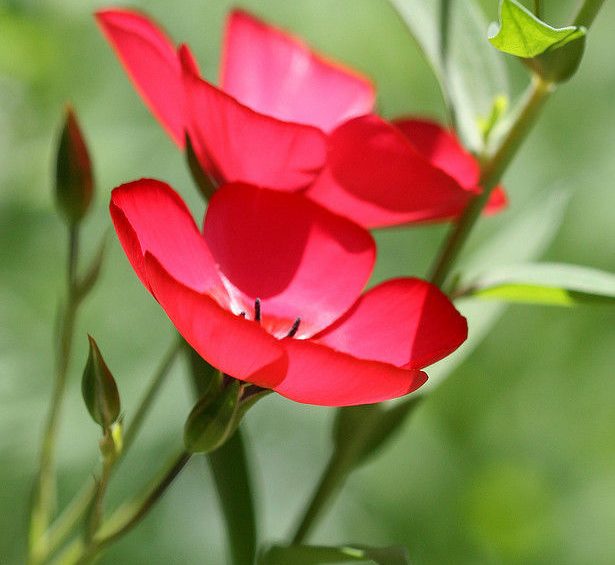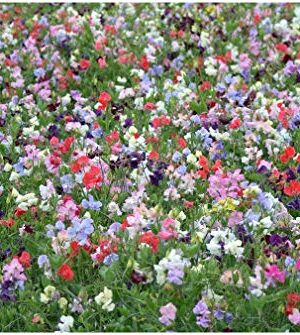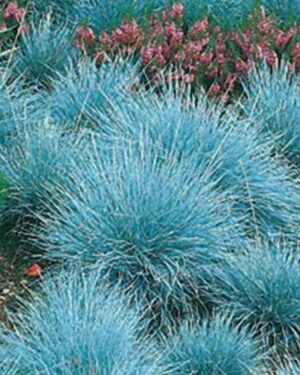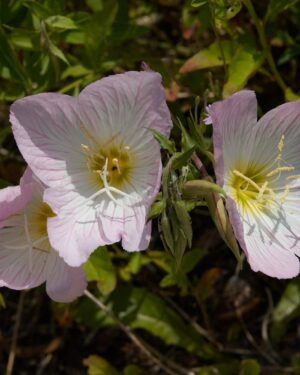Description
Linum Grandiflorum Rubrum Scarlet Flax
Linum Grandiflorum Rubrum Scarlet Flax. A stunning easy to grow hardy garden annual which delivers a fantastic display of brilliant blood red flowers from mid-summer through to late autumn. Height: 35-45cm (15-18in). Can be sown late autumn for the earliest spring displays
Cultivation Advice
- Plant Scarlet Flax seeds directly in the garden after the last frost date in spring. Choose a sunny location with well-draining soil for optimal growth.
- Scarlet Flax prefers well-draining soil with average fertility. Amending the soil with organic matter like compost can improve its texture and water retention.
- Scatter the seeds over prepared soil and lightly press them into the surface. Cover them with a thin layer of soil, as they need light to germinate.
- Space Scarlet Flax plants about 6 to 9 inches (15 to 23 cm) apart to allow them space to grow and ensure good airflow between plants.
- Keep the soil consistently moist but not waterlogged, especially during germination. Once established, Scarlet Flax is somewhat drought-tolerant but benefits from regular watering.
- Mulch around the base of the plants to retain soil moisture and suppress weeds. Avoid covering the seeds with mulch as they need light for germination.
- Scarlet Flax doesn’t require heavy feeding. If the soil is poor, a balanced, general-purpose fertilizer can be applied at planting time.
- Remove spent flowers regularly to encourage continuous blooming. This also prevents the plant from setting seeds too early and prolongs the flowering period.
- Scarlet Flax is relatively hardy but may benefit from protection in extreme heat or heavy rains. Providing a bit of shade during intense afternoon heat can be helpful.
- Scarlet Flax is generally resistant to pests and diseases. However, monitor for any issues such as aphids or fungal diseases and address them promptly.
- Scarlet Flax usually doesn’t require staking, but taller varieties might benefit from some support in windy conditions.
- Regularly monitor the plants for signs of stress, pests, or nutrient deficiencies. Adjust watering and care practices as needed.
- To extend the flowering period, consider sowing Scarlet Flax seeds in intervals, every few weeks. This staggered planting can ensure a continuous display of blooms.
- Scarlet Flax can thrive in containers or pots. Use well-draining soil and place containers in sunny spots to enjoy the vibrant blooms on balconies or patios.
- Harvest Scarlet Flax flowers for fresh-cut bouquets. Regularly cutting flowers encourages more blooms and adds a pop of color to indoor arrangements.
- Scarlet Flax readily self-seeds. Allow some seed heads to mature and drop seeds for next year’s growth, creating naturalized patches in the garden.
- Scarlet Flax flowers attract pollinators like bees and butterflies. Planting them in the garden can contribute to a pollinator-friendly environment.
- Scarlet Flax might be sensitive to frost. In colder regions, consider planting after the last frost date or cover young plants during unexpected cold spells.
- Scarlet Flax is relatively low-maintenance once established. Regular watering, deadheading, and occasional feeding support healthy growth.
- Use Scarlet Flax as edging or in borders along garden beds. Its compact size and vibrant color make it an attractive choice for defining garden spaces.
- Allow some flowers to mature and collect seeds for future plantings. Store seeds in a cool, dry place for the next growing season.
- Scarlet Flax can serve as an educational tool for children to learn about seed germination and plant life cycles due to its quick growth from seed.
- Pair Scarlet Flax with other sun-loving annuals like California poppies, coreopsis, or cosmos for a colorful and diverse garden display.









Reviews
There are no reviews yet.